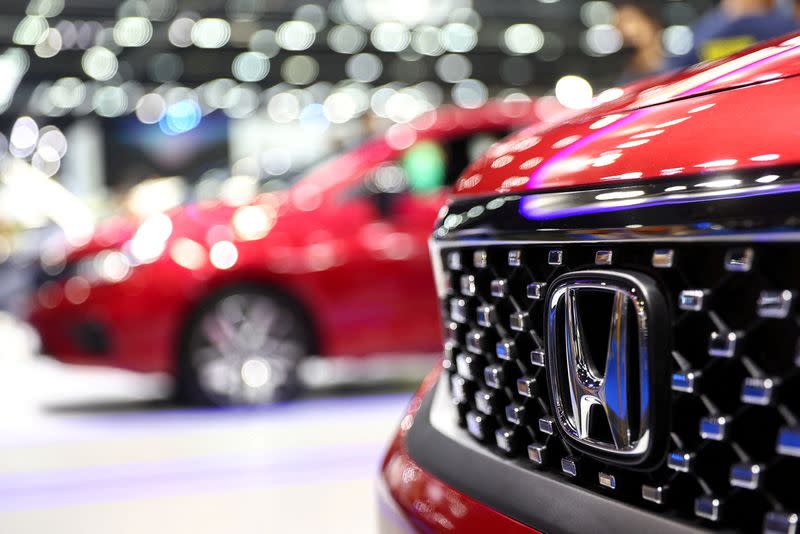US Commerce Secretary Gina Raimondo panned Huawei’s domestically-made 7 nanometre chip in an interview on Sunday, saying it was far behind American semiconductors and proof that restrictions on technology flows to China were effective.
The 7nm chip, powering Huawei’s Mate 60 Pro phone, was seen as a breakthrough for China as it was the most advanced semiconductor the country has so far produced.
The smartphone series was also seen by many as a slight for Raimondo, who was visiting China when it was released. But in an interview with CBS News’ ’60 Minutes’ programme Raimondo pushed back against that view.
Also on AF: China Bids to Lift Foreign Investment in Its Tech Amid Funds Exit
“What it tells me is the export controls are working because that chip is not nearly as good … it’s years behind what we have in the United States,” Raimondo told said.
“We have the most sophisticated semiconductors in the world. China doesn’t.”
Raimondo’s views come amid an intense tech war between China and the US, one that does not seem to have slowed Beijing’s attempts to build a self-sufficient chip supply chain.
Experts contend that Chinese chipmakers have shown surprising resilience to US-led sanctions so far and will continue to find ways to engineer around them in the future.
View this post on Instagram
Those efforts are backed by the Xi Jinping government, which is pouring billions into China’s semiconductor industry. Xi has vowed to build 70% self-sufficiency in chipmaking by 2025.
Huawei and China’s biggest chipmaker SMIC — which was allegedly behind the breakthrough 7nm chip last year — have been major beneficiaries of Beijing’s efforts, receiving billions in state subsidies.
That has meant that the companies have been mass producing 7nm semiconductors using old chip making technology, despite being saddled with low yield and high costs.
The two companies are now reportedly working on producing 5nm chips for smartphones and artificial intelligence (AI) with funding from the provincial Shanghai government.
Fury over new Huawei laptop
The 7nm chip was also viewed as Huawei ‘defeating’ sanctions imposed by the US in 2019. The Mate 60 smartphones fuelled huge revenue growth for the company just a year after it said it was struggling to survive.
Huawei has remained a symbol of the tech war between China and the US. After Washington added it to the so-called entity-list in 2019, amid fears it could spy on Americans, Huawei’s US suppliers were forced to seek a difficult-to-obtain licence to ship to it.
But Huawei’s suppliers, including Intel, have received licences worth billions of dollars to keep selling to the company.
Huawei’s revelation of its first AI-enabled laptop powered by an Intel’s new Core Ultra 9 chip this month has fuelled anger among Republican China hardliners.
When asked if she was tough enough on big business, Raimondo was emphatic.
“I hold businesses accountable as much as anyone,” she told Lesley Stahl on ’60 Minutes’. “When I tell them they can’t sell their semiconductors to China, they don’t love that, but I do that,” she added.
The Huawei Mate 60 phone also prompted a review by the Joe Biden administration to learn the details behind the chip that powers it, But details of the review have been scant.
Meanwhile, last week Huawei unveiled a new series of high-end phones — the Pura 70. Analysts expect the smartphones, known as the P70, to have an advanced locally-made chip like its predecessor, the Mate 60 handset.
- Reuters, with additional inputs from Vishakha Saxena
Also read:
Huawei Profits Jump 144% in Fastest Growth Since US Sanctions
China Central Bank Announces $70 Billion Loans For Tech Sector
US ‘Drawing Up List of Sanctioned Advanced Chinese Chip Fabs’
Dutch May Give in to US Push Against Servicing China Chip Tools
China Bans Government Computers From Using Intel, AMD Chips: FT
Beijing’s Push to Dump Foreign Tech on Display at China Chip Fair
US Curbs Set Off Sales, Tech Boom for China Chip Equipment Firms
Huawei, SMIC Set to Defy US Sanctions With 5nm Chips: FT
Slower Nvidia Chip Out in Q2 But China Firms ‘Don’t Want It’
Threat of More Chip Curbs Spurs Warnings on China Innovation
China Way Ahead of US in Chip Startup Funding – PitchBook
























